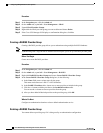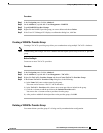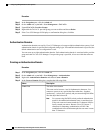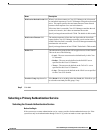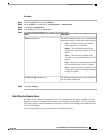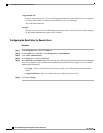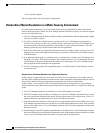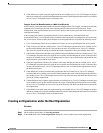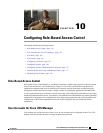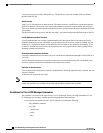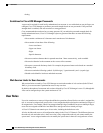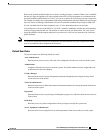
• Service profile templates
The root organization is always the top level organization.
Hierarchical Name Resolution in a Multi-Tenancy Environment
In a multi-tenant environment, Cisco UCS uses the hierarchy of an organization to resolve the names of
policies and resource pools. When Cisco UCS Manager searches for details of a policy or a resource assigned
to a pool, the following occurs:
1
Cisco UCS Manager checks for policies and pools with the specified name within the organization assigned
to the service profile or policy.
2
If a policy is found or an available resource is inside a pool, Cisco UCS Manager uses that policy or
resource. If the pool does not have any available resources at the local level, Cisco UCS Manager moves
up in the hierarchy to the parent organization and searches for a pool with the same name. Cisco UCS
Manager repeats this step until the search reaches the root organization.
3
If the search reaches the root organization and has not found an available resource or policy, Cisco UCS
Manager returns to the local organization and begins to search for a default policy or available resource
in the default pool.
4
If an applicable default policy or available resource in a default pool is found, Cisco UCS Manager uses
that policy or resource. If the pool does not have any available resources, Cisco UCS Manager moves up
in the hierarchy to the parent organization and searches for a default pool. Cisco UCS Manager repeats
this step until the search reaches the root organization.
5
If Cisco UCS Manager cannot find an applicable policy or available resource in the hierarchy, it returns
an allocation error.
Example: Server Pool Name Resolution in a Single-Level Hierarchy
In this example, all organizations are at the same level below the root organization. For example, a service
provider creates separate organizations for each customer. In this configuration, organizations only have access
to the policies and resource pools assigned to that organization and to the root organization.
In this example, a service profile in the XYZcustomer organization is configured to use servers from the
XYZcustomer server pool. When resource pools and policies are assigned to the service profile, the following
occurs:
1
Cisco UCS Manager checks for an available server in the XYZcustomer server pool.
2
If the XYZcustomer server pool has an available server, Cisco UCS Manager associates that server with
the service profile and discontinues the search. If the pool does not have an available server, Cisco UCS
Manager checks the root organization for a server pool with the same name.
3
If the root organization includes an XYZcustomer server pool and that pool has an available server, Cisco
UCS Manager associates that server with the service profile and discontinues the search. If the pool does
not have an available server, Cisco UCS Manager returns to the XYZcustomer organization to check the
default server pool.
4
If the default pool in the XYZcustomer organization has an available server, Cisco UCS Manager associates
that server with the service profile and discontinues the search. If the default pool does not have an available
server, Cisco UCS Manager checks the default server pool in the root organization.
Cisco UCS Manager GUI Configuration Guide, Release 2.0
156 OL-25712-04
Hierarchical Name Resolution in a Multi-Tenancy Environment



